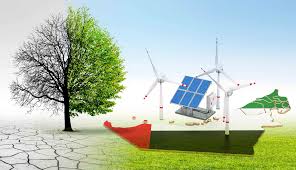The Best Use of Environmental Monitoring Systems

The use of environmental monitoring systems has become indispensable in the present world. The planet is dealing with one too many environmental challenges, and these systems can be an effective solution in minimizing the degradation of the environment, which in most cases is related to human-induced activities. These systems are capable of systematic collection of data, analysis, and interpretation of the environment which can help the concerned authorities to implement informed decisions leading to sustainable development.
With technological developments in this field in full swing, we can be optimistic about a future that proves less detrimental to environmental health. Policies adopted by some industries can be an eye-opener for others. You can know more on this topic by visiting https://osterman.com.au. Despite being a company dealing with drilling and blasting work, the use of environmental management systems has made their operations very environment-friendly.
The scope of environmental monitoring systems
These modern tools are now being extensively used to monitor air, water, soil, and biodiversity. Here are the elaborate details of each aspect:
- Air quality monitoring: Monitoring air quality is critical in industries. Emissions are common in these places which are the biggest threat to environmental pollution. Then again, in places where traffic is heavy, emissions from vehicles also pollute the atmosphere. The use of environmental management system tools can be of great help. It will measure the concentration of pollutants and intimate the concerned people within seconds. Air quality monitoring can help us to identify the main areas of pollution, make regular assessments of air quality, and send alerts regularly to safeguard from hazardous incidents.
- Water quality monitoring: Industrial wastes so far have been polluting water bodies. By installing water quality monitoring, industries can ensure the water bodies remain free from contaminants. Industries functioning near water bodies can greatly benefit from it. It can detect industrial discharges and oil spills. Furthermore, it guarantees safe drinking water while protecting the marine life.
- Soil health monitoring: Soil is an important source for human civilization to survive. As we know it is a finite resource and without it we cannot grow our crops. Environmental management systems can competently evaluate soil quality and offer guidance on sustainable agricultural practices. Furthermore, it can also identify areas that have been affected by soil erosion.
- Biodiversity monitoring: In the present world, we all know the significance of stabilizing the ecosystem. Precisely speaking, biodiversity is mandatory for ecosystem stability. Modern tools like camera traps, drones, and many other devices having sensors can help us in this aspect. It can help us to channel plans in the right direction. Real-time data is one of the key features of these tools, and we can utilize it to great effect in various ways.
Widely used environmental management system tools
- ISO 14001 Framework is an internationally recognized standard for environmental management systems. It states the approach organizations should implement to manage their responsibilities to the environment. Therefore, it helps in establishing an environmental policy while identifying and minimizing the potential risks.
- Life Cycle Assessment (LCA) tools are responsible for evaluating the environmental impact of a product or service till its entire life cycle, i.e. from raw material extraction to disposal. It also helps in assessing resource use and emissions along with comparing various products and procedures. It can also play a key role in identifying improvement opportunities.
- Carbon footprint calculators are efficient tools used to measure the total greenhouse gas emissions associated with any product or industry. It can be a worthwhile investment as it helps in real-time monitoring leading to a significant reduction of the emissions.
- Energy management systems are designed to monitor and optimize energy usage. These tools can track energy usage in real time and identify inefficiencies and opportunities for improvement. Whenever possible it also offers valuable suggestions on renewable energy integration.
- Waste management tools assist us in managing waste generation, recycling, and disposal processes. By regular monitoring of waste volumes and their variants industries can now utilize these wastes instead of filling them in the lands and water bodies.
Future of Environmental Management Systems
The future of environmental management systems and tools looks promising as it is getting better with the assistance of advanced technologies. The integration of AI and machine learning for instance will lead to predicting future trends ensuring the potential risks to the environment become non-existent.
Likewise, the integration of the Internet of Things paves the way for smart sensors and interconnected systems. They can collect real-time data on air quality, water levels, and soil health, and provide accurate readings to be used by the industries. Environmental management tools will work tirelessly across all the platforms integrating data from various sources for the best possible results.
Benefits of future environmental management systems and tools
With advancements in this field, it will give a considerable boost in quick response making. Thus we can assess environmental risks and take immediate action to regulate them. The combination of automation and real-time monitoring promises to make operations more efficient and lower overhead costs. These tools will be of great help to organizations in complying with the existing regulations, and avoiding penalties, and damages to their goodwill.





